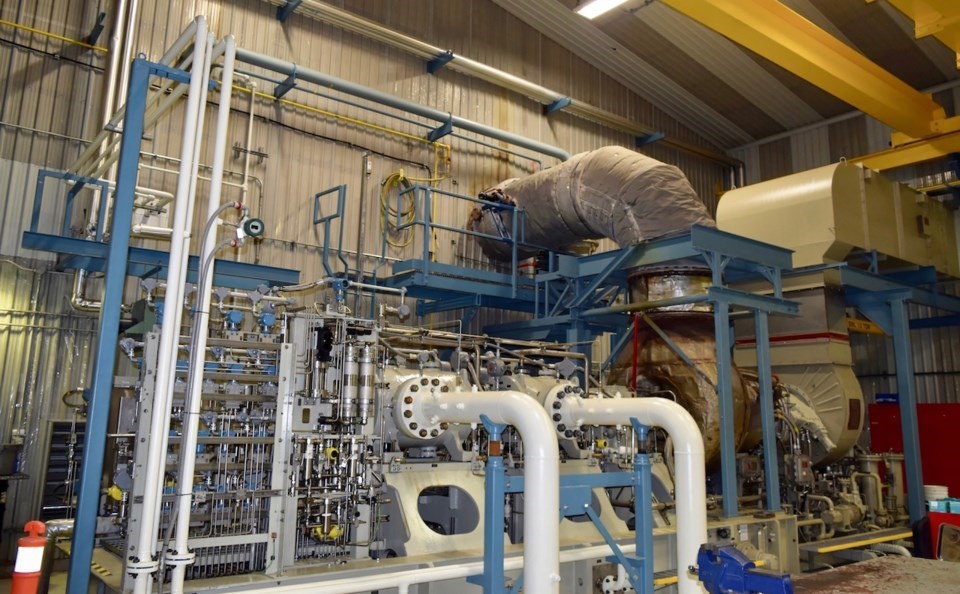The Fortis Eagle Mountain pipeline project is halfway through jumping a major regulatory hoop.
On Nov. 29, FortisBC announced that its proposed amendment to its Environmental Assessment Certificate was approved by B.C.'s Environment Assessment Office (EAO).
"As part of the review process, the BC EAO and Squamish Nation have been working collaboratively to review the changes," reads the announcement on the utility's site. "We're pleased to have the EAO's approval, and look forward to learning of Squamish Nation's decision, anticipated later this year."
Sḵwx̱wú7mesh Úxwumixw (Squamish Nation) is part of the review process and also needs to sign off on the changes being made to the certificate. Its decision has yet to be made.
In a public newsletter to members, the Nation said the pipeline that will deliver natural gas to Woodfibre LNG runs close to two Síiy̓amin ta Skwxwú7mesh (Squamish Nation Cultural sites) along Indian River and Stawamus River.
“One of the Squamish Nation conditions of approval with FortisBC is to agree on how to minimize disturbance to the use and value of the two Síiy̓amin ta Skwxwú7mesh,” the letter states.
The Nation notes that there will be no construction on the Stawamus River site, but there will be construction vehicles using the forestry roads that already run through the site. There will also be construction near the edges of the site.
Nation representatives visited this area in September.
“Ongoing discussions with FortisBC are focused on minimizing any disturbance to the site. That includes things like access or noise caused by
nearby construction, set-back buffers for temporary storage or parking spaces, etc,” the letter states.
The Nation encouraged its members to bring forward any other concerns about the pipeline.
On Nov. 29, the EAO wrote to District of Squamish council, informing them that FortisBC's proposed amendment to its Environmental Assessment Certificate was approved.The utility proposed several changes to its certificate.
The first was an expansion to the width of the pipeline corridor. This would increase the width of the corridor by an average of 200 metres for eight kilometres.The second would twin a three-kilometre section of the existing pipeline in Coquitlam coming from the existing Eagle Mountain Compressor Station. Fortis said this would increase the reliability to Woodfibre LNG and other customers on the Sunshine Coast.
The third would be the installation of two 26,000 horsepower electric motor-driven compressor units within the existing Eagle Mountain Compressor Station, instead of the certified two 20,500 horsepower units.The final amendment involves the relocation of the proposed Mount Mulligan compressor site in Squamish to the Woodfibre LNG project site.
This site will be powered by gas, though Fortis will be constructing the station to accommodate electric-powered compressors if it becomes possible to switch types of power, a company spokesperson said."Based on what we heard from the community during engagement, we have been actively exploring a range of opportunities to minimize emissions, including at the Squamish compressor station," said Jessica Skjeveland in a statement to The Squamish Chief.
"We assessed the feasibility of using electric-powered compressors and determined this was not technically feasible at this time. As a result, the compressors will be gas-powered. However, we will be constructing the Squamish Compressor Station to accommodate electric-powered compressors if this becomes feasible in the future."Skjeveland said that this project requires over 100 permits, though most of them have been received or submitted.
"There are fewer than 20 permits that FortisBC still needs to apply for, and we anticipate submitting and securing these before construction starts—anticipated in late 2022." she said.Skjeveland also added Fortis will not begin construction until there is a final investment decision from Woodfibre.
Woodfibre LNG was quick to congratulate the utility on this development.
"Congratulations to Fortis on this important milestone," wrote spokesperson Rebecca Scott. "The province of B.C. continues to demonstrate their commitment to a rigorous, thorough, and fact-based environmental approval process."Local environmentalists applauded the utility's decision to move the location of the Squamish compressor station from Mount Mulligan to the Woodfibre site, though there were still outstanding concerns.
"We're pleased that FortisBC has finally responded to our concerns about the proximity of the Mount Mulligan compressor station to homes, schools, and the hospital. This is the result of six years of public pressure from neighbourhood residents to relocate the compressor station to keep their families safe," said Tracey Saxby, head of My Sea to Sky in an email.
"While we support the relocation of the compressor station from Mount Mulligan to the Woodfibre site, we remain concerned that FortisBC's decision to use two gas-fired turbines to power the compressor station will significantly increase local greenhouse gas pollution and worsen air pollution, which has human health impacts, particularly for the elderly and for kids."
She said the group was concerned about the potential for a blast or rupture, especially in a residential area.
The current pipeline route will go down Finch Drive in the Loggers Lane East neighbourhood.
It will then make its way to the BC Rail property by the business park. From there, it will tunnel for about nine kilometres under the estuary until it hits Woodfibre.
Finally, Saxby added that the pipeline should never be built, due to the climate crisis.
"The International Energy Agency has called on world governments to stop construction of new fossil fuel infrastructure to limit global warming to 1.5 degrees Celsius," she wrote. "It is completely illogical to invest in a new fracked gas pipeline that will lock in greenhouse gas emissions for up to four decades, when the rest of the world is rapidly shifting away from fossil fuels."



